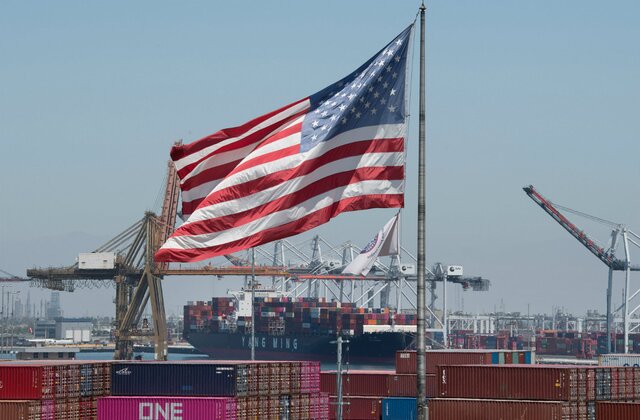When will the pain of the world economy end?
Weak growth, high inflation, restrictive monetary policy, dollar strength and asset-price weakness have dogged G10 economies throughout much of the past two years. 2024 should see some signs of relief – but it will be slow going.

The real U.S. GDP increased by 4.9 percent in the third quarter of 2023 after slowing in the fist and second quarters.
>> Global economy is in a precarious position
Global growth in 2024 seems likely to be slightly weaker than the likely 2023 outturn, which we put at around 2.75%. But, importantly, some optimism about growth seems likely to develop later in the year after a difficult start to 2024. This could be significant when it comes to the performance of asset prices such as stocks, or the value of the dollar.
Right now, there’s still more financial stringency on firms and households coming through from the rate hikes and quantitative tightening that’s happened to date, and a few central banks still have more rate hikes to do, it would seem, although we believe that those lie amongst the minor G10 countries, not the likes of the Fed, ECB and BoE. On the contrary, these central banks appear likely to move towards easing cycles. Financial-market pricing sees these central banks starting to cut rates in the second or third quarter of next year.
The risk, as we’ve seen before, is that the market is jumping the gun. But, even if so, it will still take some time for policy easing to take effect, and we cannot ignore that many countries will be looking to consolidate their fiscal finances after the largesse prompted by first the pandemic, then the war in Ukraine (in the case of Europe).
With fiscal policy a headwind, and the tailwind from monetary easing slow to come through, growth looks set to stay rather lacklustre, even if it is a good deal stronger by the end of next year than the start. But even this outlook is vulnerable to newer risks, some of which are just starting to show through. These include the credit cycle as high and persistent interest rates root out corporate weakness. They also include high indebtedness in the public sector that has happened because Covid and the war in Ukraine led to a significant transfer from the public sector to the private sector. Forecasts of high deficits and debt, in the US in particular, accompanied by fractured fiscal governance and a potentially fractious presidential election in November, could serve to keep bond yields relatively high even as the Fed starts to ease. Geopolitical risks have sprung up anew, with the flashpoint clearly being in the Middle East. So far, this has not led to a significant rise in energy prices – but the conflict between Israel and Hamas may only be the first part of a multi-act war in the region.
It might seem illogical that riskier assets, such as equities and corporate bonds, can recover against this backdrop, or that the dollar gives back some of its strength. But markets are, by their nature, forward-looking. And, even if the bottom of the valley has not been reached for global growth and risk assets, many will look ahead to the future recovery, perhaps especially in emerging markets given that they have generally been starved of investment for some time and that an easing cycle from the Fed could be no more than 6-9 months away.
>> Where next for the global economic recovery?
An important consideration here will be the US dollar. The Standard Bank’s expectation is that the US dollar will fall as this period of weak growth, high inflation, high rates and falling asset prices gives way to a recovery in growth, inflation closer to target, lower rates, and improving asset prices. This bank doubts that it will be a smooth path given that the bottom of the economic cycle has not been reached yet and the top of the rate cycle may last for some time.
In addition, the various risks as mentioned earlier, such as rising energy prices created out of geopolitical strains, could produce new bouts of US dollar strength as the currency’s safe-asset qualities shine through. But, notwithstanding these risks, the Standard Bank still expects 2024 to be something of a transition year for the US dollar as growth slowly starts to recover, policy rates fall, and asset prices stabilise, then improve. 2023 has been something of a “holding” year for the US dollar in which the absence of the dramatic policy hikes of 2022 from the Fed and others has cooled volatility in the market and kept the US dollar basically stable in trade-weighted terms. As we go through 2024 and then 2025, the Standard Bank look fors this slow transition we have talked about to lead the dollar down some 10-20%.








